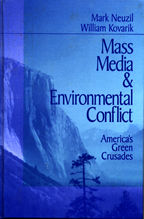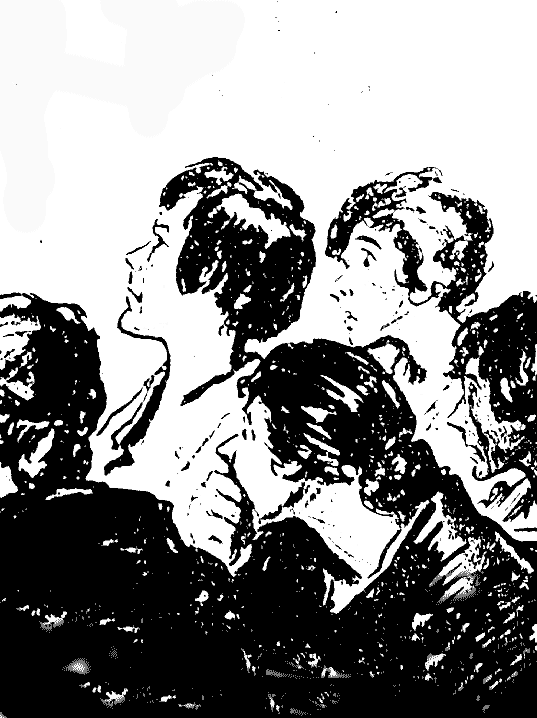At the end of the 20th century, two main metaphors for information were common: information “overload” and the information “superhighway,” and the two concepts worked together. Just as trucks on a highway can be over weight limits, so, too, could a person’s capacity to absorb information deliveries also be overloaded.
The problem with this metaphor is that it assumes a one-dimensional delivery of a quantity of information from point A to point B.
Of course, that’s historically a major flaw in the way see communication. From the “hypodermic” theory to the Source-> Message-> Receiver binary model to the diffusion of innovation models of the 1950s and 60s, most of the research approach was on how communication was delivered. Better research from the era involved the many social factors influencing the impact of information.
But what about the idea of information as a quality rather than a quantity? What metaphors do we have for that concept? One of the most interesting new ideas in this area, although at first it seems a little obvious, is J.P. Rangaswami’s idea about information as food, which appeared as a TED video in May, 2012.
“Information, if viewed from the point of view of food, is never a production issue. … It’s a consumption issue, and we have to start thinking about how we create diets [and] exercise.”
Similarly, a book by Clay Johnson, The Information Diet, makes the case that it’s time we started being as selective with the information we consume as we are the food that we eat, then describes what a healthy diet and healthy habits look like.
So, what about nutritional labeling? How far does the idea of a balanced information diet take us into understanding problems of defining qualities of information, for example, the point where personal perspectives turn into bias, or where the foundation of public information is undermined by corporate influences.
Rangaswami jokes that you might be able to put a truth content label on information. (So, for example, a press release might be 20 percent true.) But the problem with information is that everything is relative to the position of the observer. A press release might very well be only 20 percent true, but who is to say? You can grind food up in a lab and get numbers for fat and protein and vitamin content, and you can replicate those in another lab. But you can’t grind up press releases and analyze them. Quantifying truth is damned near impossible.
Traditionally, it was the journalists who were observing from a public interest standpoint from within the news media. But the idea of journalists as defenders of the public interest, as pure truth-seekers working on behalf of democracy, has been eroded over recent generations. And as we have seen studying Pulitizer and Hearst and the muckraking generation, it was an ideal that few even approached in the first place.
So perhaps food isn’t the best metaphor. What are some of the others?
- Theater? In “Public Opinion” almost a century ago, Walter Lippmann compared the information process in a democracy to a theatrical production in which most of the audience could not hear or understand what was happening on the stage. Of course, with internet delivery of video and documents, its much easier to follow the action on the stage in the 21st century.
- Nerve impulses of a social organism? Sociologists use the organic metaphor constantly, and it does seem useful. When nerves atrophy there is little muscle growth, and when information systems atrophy, economic growth drops off.
- Light waves? Light is part of a frequency spectrum of energy and moves at a constant speed, but it can be bent by the gravity of powerful celestial objects. Information can be seen in terms of frequencies and is often bent by the gravity of institutional forces.
- Terrains? The terrain metaphor is widely used, as in “treetops” or “grass roots” public relations campaigns. It can also reflect known and unknown information at the surface and below it.
- Stocks? Stocks and bonds have fluctuating values on the market, and so does information.
Another approach to this metaphor issue is to ask what we want it for; that is, what qualities do we want to measure in information? For this we might turn to Jurgen Habermas’ theory of rational communication and ideas about the conditions of a public sphere. These include:
- Autonomy from state and economic power. Discourse must be based on the concerns of citizens as a public rather than driven by the media of money and administrative power that facilitate the operations of the market and state.
- Exchange and critique of moral-practical validity claims. Deliberation involves engaging in reciprocal critique of normative positions that are provided with reasons and thus are criticizable – are open to critique rather than dogmatically asserted.
- Reflexivity. Participants must critically examine their own cultural values, assumptions, and interests, as well as the larger social context.
- Ideal role taking. Participants must attempt to understand the argument from the other’s perspective. This requires a commitment to an ongoing dialogue with difference in which interlocutors respectfully listen to each other.
- Sincerity. Each participant must make a sincere effort to make known all information – including their true intentions, interests, needs, and desires – as relevant to the particular problem under consideration.
- Discursive inclusion and equality. Every participant affected by the validity claims under consideration is equally entitled to introduce and question any assertion whatsoever. Inclusion can be limited by inequalities from outside of discourse – by formal or informal restrictions to access.
Of course, not all of these are quantifiable, but autonomous and inclusive and reflexive are possible points of measurement. But human communication with these characteristics isn’t really like anything else on earth.
That’s why we need to be skeptical about the ultimate value of approaching communication issues through metaphors. Eventually they seem to collapse as we approach the complexity of social communication systems.

 Revolutions in Communication
Revolutions in Communication Mass Media & Environmental Conflict
Mass Media & Environmental Conflict